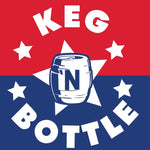
Your Complete Guide to Irish Whiskey
Irish whiskey is (still) one of the fastest growing alcohol sales categories in the United States; many whiskey lovers swear by it, and there’s no doubt you’ll find plenty of options at any bar, liquor store, or pub. It's popular in part because of its easy drinkability – Irish whiskey is sweet and smooth, but still has the complexity of a brown spirit. Some say it’s a good gateway for people who want to go beyond their usual vodka cocktails and branch out a bit. Irish whiskey also presents a good bargain in the market, so it's more within reach of younger consumers than are most Scotches. So, let’s take a look back at what makes Irish whiskey Irish whiskey!
What Is Irish Whiskey?
The main difference between Irish whiskey and Scotch whiskey is that Irish whiskey is typically distilled three times, whereas Scotch whisky is in most cases only distilled twice. In addition to that, while many Scotch whiskies are heavily peated and known for their smoky, earthy flavors, Irish whiskey is typically unpeated and therefore quite smooth and succulent on the finish.
It also has an extra category of malt, called Single Pot Still, which means it’s made from both malted and unmalted barley. This grew out of a tradition of using unmalted barley, as malted barley was taxed.
The History of Irish Whiskey
The production of whiskey in Ireland dates back centuries. Historical records are unclear, but most whiskey writers seem to accept that Irish missionary monks picked up the technique of distillation in the Middle East about 800-1000 years ago and brought it home to their island. What's a bit more unclear is whether they then spread that technology to Scotland, or whether the Scots picked it up from mainland Europe, via Scandinavia and Russia.
The question of who invented whisk(e)y may never be solved, but one thing that's clear is that in 1608 the Bushmills distillery, in what is now Northern Ireland, had a license from the British Crown to distill whiskey. Bushmills says that makes its distillery the world's oldest whiskey distillery, and I can't see any reason to dispute that claim.
At the dawn of the 20th century, the Irish whiskey industry was thriving. By 1900, Irish whiskey was the leading spirit in Great Britain, and by 1919, Jameson was one of the top-selling whiskey brands in the United States.
Irish Whiskey Production Process
The process of making Irish whiskey is similar to that of Scotch, except that where Scotch starts with entirely malted barley, Irish whiskey starts with a mix of malted and unmalted barley.
Aside from that, the process is nearly identical: the barley is dried in a kiln, in most cases without the use of peat smoke. It's then ground and steeped in water to ferment. The fermented liquid is then triple distilled, and aged in oak barrels for at least three years. Those barrels may be new, or they may have previously aged fortified wine, bourbon, or rum.
Depending on the brand, some Irish whiskeys are then blended with grain whiskey prior to bottling.
Today’s Irish Whiskey Distilleries
Today, there are still quite a few whiskey distilleries in and around Ireland. Some of the most popular include:
Old Bushmills: Old Bushmills is actually the oldest distillery on the island of Ireland. Today it’s owned by the spirits conglomerate Diageo, and the plant is still open regularly for tours.
Cooley Distillery: Formerly the only independent, Irish-owned distillery in Ireland, Cooley was purchased in 2011 by Beam, Inc. Cooley's products are all double-distilled, not triple-distilled; Cooley's management believes the third distillation strips some of the flavor and character from the product.
New Midleton Distillery: Owned by Pernod-Ricard, and situated alongside the Old Midleton Distillery, which ceased operation a few years after the new distillery opened. New Midleton distills the ever-popular Jameson, as well as Powers, Paddy, Midleton, Redbreast, Green Spot and a few other lesser-knowns.
How to Drink Irish Whiskey
Because it’s smoother than Scotch, even novices can drink the spirit neat, with a splash of water or on the rocks. At the end of the day, it all depends on your taste buds, and you can experiment in the same way you do with Scotch until you find something you really enjoy. Of course, you can also enjoy it in a cocktail; some popular ones include Whiskey & Ginger, Irish Coffee, and the Old Fashioned.
For more liquor guides and cocktail recipes, check out our other blogs! or head to our online store for all of your at-home liquor needs!
